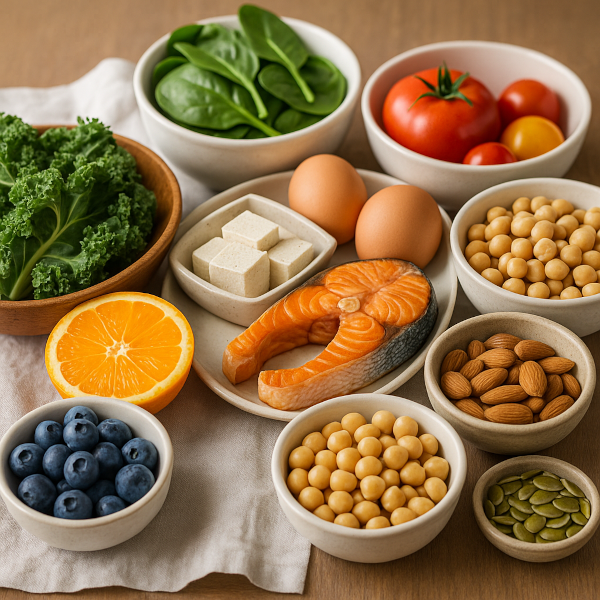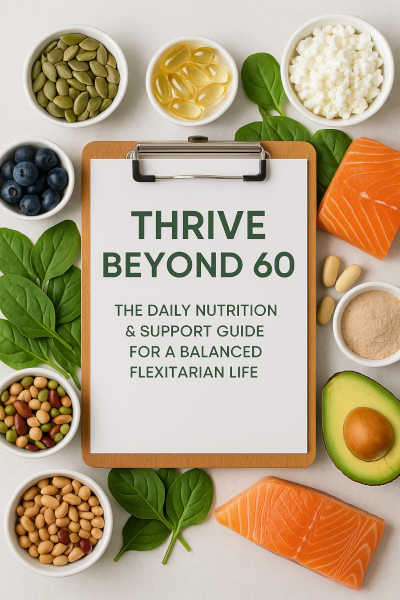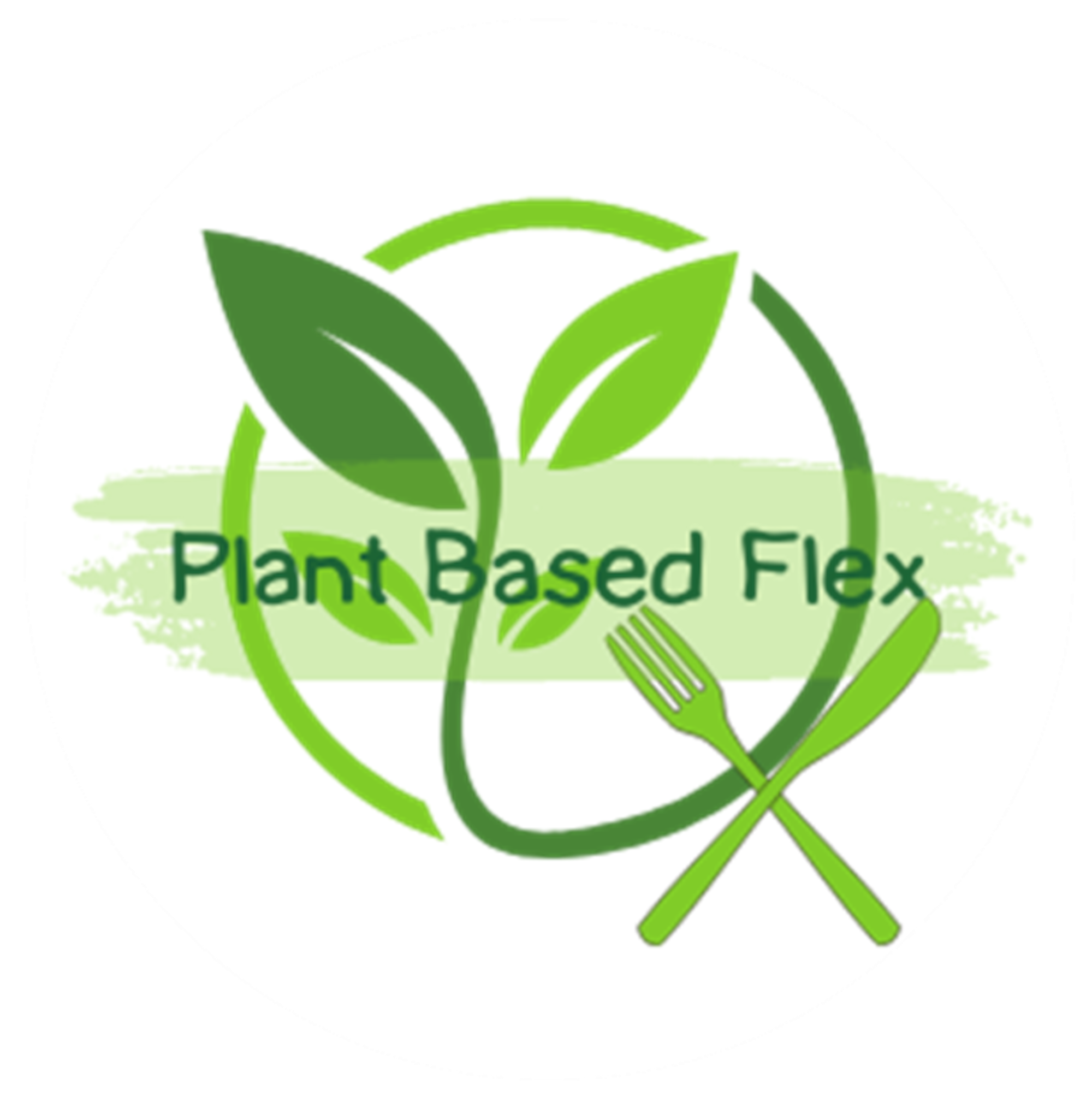A Guide for a Balanced Flexitarian Life
As we move through our 60s, our bodies start sending clearer messages, a little more joint stiffness, dips in energy, slower recovery, or even foggy thinking. But instead of blaming “getting older,” many of these changes can often be traced back to nutritional gaps that naturally happen with age.

Thrive Beyond 60: The Daily Nutrition & Support Guide for a Balanced Flexitarian Life
As we move through our 60s, our bodies start sending clearer messages, a little more joint stiffness, dips in energy, slower recovery, or even foggy thinking. But instead of blaming “getting older,” many of these changes can often be traced back to nutritional gaps that naturally happen with age.
And if you're like me, someone who follows a mostly plant-based flexitarian diet, you're probably already tuned into the power of whole foods. I personally avoid red meat and chicken, but I do include fish, and occasionally pasteurized eggs and goat cheese, while prioritizing plenty of leafy greens, legumes, grains, vegetables, fruits, nuts and seeds. My lifestyle isn’t about perfection or labels — it’s about balance, nourishment, and listening to what my body needs.
Whether you're more vegan, raw, flexitarian, or even incorporating more animal-based proteins, what matters most is the quality of your food and how it supports your lifestyle and long-term health. This guide is designed to offer flexible options based on what works for you.

Vitamin D3 – Your Bone + Immune System’s Best Friend
What it does:
- Helps absorb calcium for strong bones and teeth
- Supports immune health, mood regulation, and inflammation control
- Contributes to muscle strength, which lowers fall risk
What happens if you're low:
- Fatigue, joint/muscle pain, bone loss, mood swings
Recommended Daily Intake:
- 800–2,000 IU/day for adults over 60 (especially those indoors often)
Flex-Friendly Ways to Get It:
- Sun exposure: 15–30 min of midday light (arms/legs)
- Fortified foods: almond milk, soy milk, orange juice, cereal
- UV-exposed mushrooms (check label)
- Fatty fish (e.g., salmon, sardines, trout)
- Supplement: D3 (plant-based or lanolin-derived); combine with K2
Vitamin B12 – Your Brain, Nerves & Energy Lifeline
What it does:
- Vital for nerve health, cognition, and red blood cell formation
- Converts food into usable energy
- Protects against memory loss and neuropathy
What happens if you're low:
- Fatigue, tingling, brain fog, depression, even permanent nerve damage
Recommended Daily Intake:
- 2.4 mcg/day, but 250–500 mcg/day is often advised for adults 60+
Flex-Friendly Sources:
- Fortified nutritional yeast, plant-based milks, cereals
- Eggs, fish, dairy if included
- Supplement: Methylcobalamin or Cyanocobalamin (sublingual or capsule)
Magnesium – The Great Relaxer
What it does:
- Supports muscle and nerve function, blood pressure, bone strength
- Helps with sleep quality, mood, and digestion
- Plays a role in energy production and blood sugar regulation
What happens if you're low:
- Cramps, irritability, sleep trouble, fatigue, constipation
Recommended Daily Intake:
- 310–420 mg/day
Flex-Friendly Sources:
- Leafy greens (spinach, Swiss chard), pumpkin seeds, cashews, avocados
- Beans, tofu, whole grains
- Supplement: Magnesium glycinate (calming), citrate (digestive support)
Lifestyle Tip:
Epsom salt baths = transdermal magnesium + relaxation.
Calcium – The Bone-Builder
What it does:
- Essential for bone density, muscle contraction, and nerve transmission
- Works with vitamin D and K2 for strong, healthy bones
What happens if you're low:
- Weak nails, fractures, brittle bones, muscle spasms
Recommended Daily Intake:
- 1,000–1,200 mg/day
Flex-Friendly Sources:
- Tofu with calcium sulfate, tempeh, chia seeds, fortified plant milks
- Leafy greens (bok choy, collard greens), almonds, figs
- Supplement: Calcium citrate is gentle and absorbed well
Iodine – Your Thyroid’s Fuel Source
What it does:
- Needed for proper thyroid hormone production
- Supports metabolism, temperature regulation, energy levels
What happens if you're low:
- Sluggish metabolism, cold sensitivity, fatigue, goiter
Recommended Daily Intake:
- 150 mcg/day
Flex-Friendly Sources:
- Iodized salt (just a pinch does the job)
- Seaweed (nori, dulse, wakame in moderation)
- Eggs or dairy, if included
Caution:
Too much raw cruciferous veg may inhibit iodine absorption. Balance with cooking and moderation. Plus for me, digestive issues.
Omega-3s (EPA + DHA) – Inflammation’s Natural Opponent
What they do:
- Reduce inflammation
- Support brain function, heart health, eye health, and joint mobility
What happens if you're low:
- Dry skin, joint pain, poor focus, mood imbalances
Recommended Daily Intake:
- 250–500 mg/day of EPA/DHA
Flex-Friendly Sources:
- Flaxseeds, chia seeds, walnuts (high in ALA)
- Algae oil supplement (vegan EPA/DHA)
- Fatty fish like salmon or sardines
Other Important Nutrients
Vitamin K2
- Works with D3 and calcium to prevent arterial calcification
- Found in natto, fermented foods, or supplements
Zinc
- Supports immune function and wound healing
- Found in pumpkin seeds, legumes, quinoa
Iron
- Especially important for women or those low in iron-rich foods
- Found in lentils, spinach, blackstrap molasses (add citrus for absorption)
CoQ10
- Supports heart health, energy, and may offset statin side effects
- Naturally found in fish, meat, and as a supplement (ubiquinol form)
Add-On Nutrients Worth Considering After 60
Alongside the foundational vitamins and minerals, certain targeted compounds can help support joint strength, skin health, energy, and muscle recovery — all of which become more important as we age. These aren’t “must-haves” for everyone, but they’re worth knowing about so you can decide what fits your needs and lifestyle.
Collagen – Joint, Skin, and Gut Support in One
What it does:
- Promotes joint flexibility and cushioning
- Supports skin elasticity and hydration
- May improve gut lining integrity
- Helps preserve muscle mass and bone strength
What happens as we age:
- Natural collagen production declines, leading to wrinkles, stiff joints, and slower recovery
How to get it:
- Collagen peptides supplement (look for hydrolyzed collagen for better absorption)
- Bone broth (not plant-based, but flex-friendly for some)
- Plant-based collagen boosters: Vitamin C, silica-rich foods (cucumbers, oats), zinc, and amino acids like glycine and proline
Suggested Dose:
- 10–20 grams/day for skin, joint, and connective tissue support
Flex Tip:
Look for marine collagen if avoiding beef sources, or use plant-based boosters to stimulate natural collagen production
Creatine – Muscle, Brain, and Energy Powerhouse
What it does:
- Helps maintain muscle strength, power, and recovery
- Supports brain energy and cognitive function
- May help prevent muscle loss (sarcopenia) in older adults
Why it matters after 60:
- Muscle mass and strength decline with age, and creatine helps support cellular energy (ATP) production in muscles and the brain
How to get it:
- Found in meat and fish (so vegetarians/vegans get much less)
- Creatine monohydrate powder is well-researched, safe, and effective
Suggested Dose:
- 3–5 grams/day, consistently
- No need to “load” (e.g., 20g/day); just take a daily maintenance dose
Flex Tip:
Choose a micronized creatine monohydrate that mixes well in water or smoothies. Best taken with food or carbs for better absorption.
Bonus: Other Smart Nutritional Compounds to Consider
Lutein + Zeaxanthin – Eye Health & Cognitive Support
- Protects eyes from blue light and oxidative damage
- Found in spinach, kale, corn, or eye-support formulas
Turmeric / Curcumin – Natural Anti-Inflammatory
- Helps with joint stiffness, inflammation, and immunity
- Best absorbed with black pepper (piperine) and fat
- Use fresh turmeric, golden milk, or capsules
Probiotics + Prebiotics – Gut, Mood & Immune Health
- Support digestion, immunity, and even mental clarity
- Found in fermented foods (sauerkraut, kefir, miso), fiber-rich foods, or as a broad-spectrum supplement
My Approach to Wellness
I don’t believe in food rules or shame. If you eat more animal protein, or if you’re fully vegan or mostly raw, the real power lies in choosing high-quality, unprocessed foods that nourish your body and support your lifestyle. The closer to the earth you eat, the healthier your body and soul – that's what I believe.
This guide offers flexible, real-life options based on what’s accessible, affordable, and aligned with your health goals.
Free Resource: Nutrition Essentials Checklist
Want help simplifying your routine? I’ve created a FREE printable checklist that includes:
- Key vitamins, minerals, and supportive nutrients
- What they do in the body
- Food and supplement sources
- Daily dose suggestions
- A space for your personal notes or goals
Download it here.
Disclaimer:
This content is for informational purposes only and is not intended as medical advice. Always consult your healthcare provider before making any changes to your diet, supplements, or lifestyle—especially if you have existing conditions or take medication.
💌 Haven’t joined the Plant Based Flex blog yet?
It’s completely free, and when you confirm your email, I’ll send you my 7-Day Kickstart Wellness Bundle to help you start thriving beyond 60.
